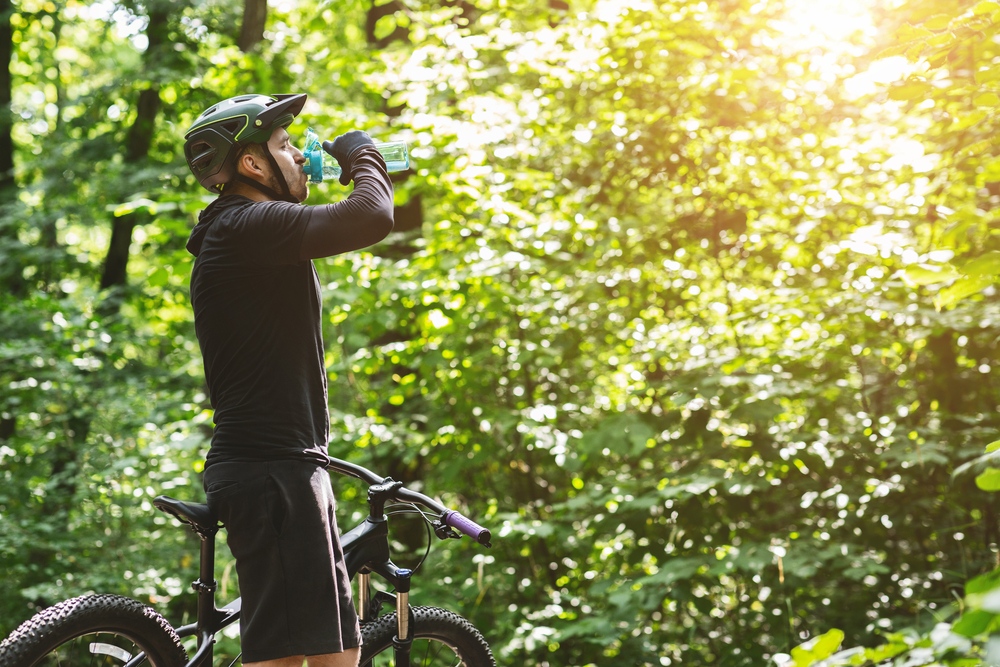If you count yourself among those who’ve been putting in some serious time on a stationary trainer, smart trainer, or rollers over the past months and are ready to see how your efforts translate to the great outdoors, there are a few things to keep in mind. In addition to anticipating some differences in your performance and power outputs, you need to make sure you make the transition attentively to ensure that it’s as smooth as possible. Here’s how!

Brush up on basic safety and current regulations in your area
As obvious as it sounds, after a winter of riding in the controlled environment of your pain cave, getting back outside can be a bit of a shock to the system. Many dedicated cyclists have fallen in love with indoor trainers because they provide a safe environment to pour all your focus and effort into hitting those challenging interval workouts with all you’ve got. There’s no doubt that it can feel terrific to empty the tank completely, but when you’ve got to account for other cyclists, traffic, and multiple other potential hazards, it isn’t such a good idea. Not to mention, the number of cyclists has grown substantially over the last year, with a large portion of the increase being people who are either new to cycling or who haven’t ridden in a long time, so it’s vital to be hyper-aware.
The fact that social distance and freedom of mobility regulations are also still in place in many countries is another thing to consider. Unlike indoor training, you’ve got yourself and others to worry about. That said, as long as we all maintain good hygiene habits and comply with local regulations, there’s no reason we can’t celebrate the overall win of seeing more people on bikes.
Take the time to dress properly

April is notorious for bringing with it abrupt and massive weather shifts. Especially when going for a longer ride, you shouldn’t take anything for granted. Even if you’re a seasoned cyclist, it can take some time to remember everything you need to stay safe and comfortable for seasonal riding. Take a moment to refresh your memory, pay attention to the local forecast, and always err on the side of caution, aka overpreparation.
Be prepared for a little more uncertainty
The weather isn’t the only thing that’s going to make your rides less predictable. If you’ve been following a specific training plan and seeing rewarding and consistent gains over the cooler months, be ready for a bit of an adjustment period as you transition to riding outside. You will likely see that your hard work has paid off and might even surprise yourself with how handily you tackle some outdoor segments that used to give you grief. Still, it is essential to be patient with yourself and note that traffic, weather, and unsuitable terrain can all impact your outcome in a training session when you’re riding on the road.
Recalibrate your hydration cues
If you’re an indoor training enthusiast, you likely know the perils of overheating all too well. Even with the help of a fan or two, indoor conditions can quickly leave you soaked and feverish, craving the airflow of an outdoor riding experience. With your return to a fresh spring breeze, there’s a good chance you’ll be able to produce more power (especially over a prolonged effort), as your body doesn’t overheat so fast. The only downside is that it isn’t as easy to remember to hydrate when you’re not hovering over a pool of your own sweat. Remember that you often perspire just as much riding outdoors, depending on the air temperature, humidity, and effort level, but it is just more likely to evaporate. Since your sweat rate won’t be as obvious, it may take you a few rides to adjust your hydration routine accordingly.

Say hello to hills and headwinds
When making your grand return to the open air, you might realize that alfresco riding means your average speed takes a bit of a hit. If you’ve gotten used to clocking above 20 mph most days on Zwift, the wind, hills, and real roads could leave you feeling a bit discouraged. Your average Zwift speed might be more consistent on hillier routes, but it is also important to consider how they will be affected. Note that when you adjust the ‘trainer difficulty’ setting on your turbo trainer, it doesn’t reduce the power necessary to get to the top of a climb, but it does alter how you experience the changes in gradient. You get to enjoy a steadier effort as the trainer does the work of smoothing out some of the undulations. Once you’re back in the real world, though, you’re going to feel every degree of a steep ramp or hill for precisely what it is. This will make a notable difference when you’re at the base of a slope that starts steep—as you feel the resistance build more quickly.
Don’t forget to enjoy the thrill of being outside!
All that said, it is important to relish those first outdoor rides of the year and not get too caught up in comparing them to your indoor performance. Despite how far the graphics on Zwift have come, they are still no replacement for the real deal. Riding outside is also stimulating in different ways, requiring that extra edge of mental toughness, more agile bike handling, and hardiness against the elements. So enjoy the change in pace, and don’t forget to reward yourself with a café stop or two (another little perk that Zwift likely won’t be able to offer anytime soon)!




